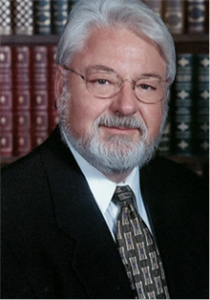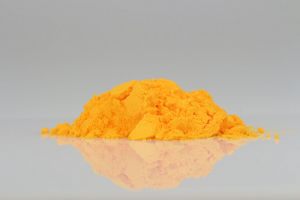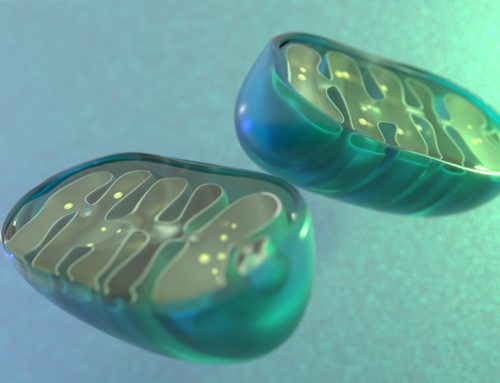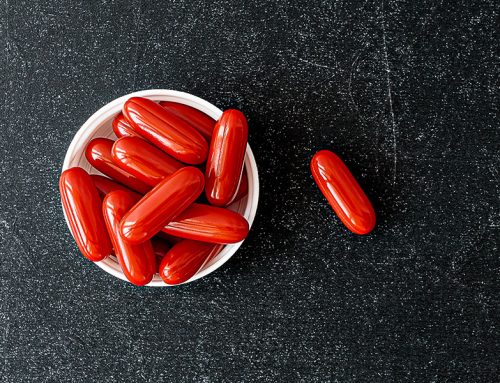
Dr. William Judy, founder and director of the SIBR Institute, is arguably the world’s leading expert on Coenzyme Q10 absorption. He has led numerous lab studies and animal studies and clinical trials on the absorption and effects of Coenzyme Q10 preparations.
We know that Coenzyme Q10 is an essential co-factor in at least three important processes in the body: cellular energy production, cellular and lipid antioxidant defense, and regulation of endothelial cell function. We know that our adult bodies produce less Coenzyme Q10 with increasing age, and we know that most of us cannot make up the difference through the food that we eat [6]. From the age of 40 on, we need a good Coenzyme Q10 supplement daily. I asked Dr. William Judy what is involved in getting a good Coenzyme Q10 supplement.
Beneficial health effects of Coenzyme Q10 supplements
Coenzyme Q10 molecules are distinguished in two ways:
- They are fat-soluble, lipophilic molecules
- They are redox molecules, capable of giving up (oxidation) and taking on (reduction) electrons in chemical reactions
Well-absorbed Coenzyme Q10 supplements have beneficial health effects on heart failure patients [7], on patients taking statin medications [2] on healthy elderly individuals [1], and on veterans suffering from Gulf War Illness [3] I asked Dr. William Judy, the founder of the SIBR Institute, what it takes to make a well-absorbed Coenzyme Q10 preparation [5].
Coenzyme Q10 supplements cannot be in crystalline form
First of all, said Dr. Judy, it is important to know that the body cannot absorb a crystalline form of any substance and that the Coenzyme Q10 crystals will not dissociate into single molecules at body temperature [4]. The Coenzyme Q10 raw material comes in the form of crystals, and we humans just cannot absorb them. We would need a body temperature of 50 degrees Celsius to be able to dissociate the CoQ10 crystals to single molecules in the stomach and small intestine. Remember: normal body temperature is 37 degrees Celsius.

The dry powder Coenzyme Q10 raw material needs careful processing if it is going to be absorbed in the small intestine.
Coenzyme Q10 in the ubiquinone form dissolved in vegetable oils
To be absorbed, the Coenzyme Q10 supplement must be of a crystal-free formulation. How can we tell if a preparation is crystal-free? Well, for a start, we can rule out any tablets or capsules containing CoQ10 powder. What we are looking for is a Coenzyme Q10 supplement that has the Coenzyme Q10 in its ubiquinone form pre-heated and dissolved in vegetable oil inside soft gelatin capsules.
The three forms of Coenzyme Q10 in the body
Dr. Judy explained that there are three forms of Coenzyme Q10 in the body:
- The ubiquinone form, which is the oxidized form, the form that is an electron acceptor, is the stable form of Coenzyme Q10. It is the form that has been used in the clinical trials that have produced statistically significant health benefits. It is the form that plays a vital role in the bio-energetics of the cells. It has a bright yellow-orange color inside the capsule.
- The semi-ubiquinone form, which is a partially oxidized and partially reduced form, is a less stable form of Coenzyme Q10. It is not commercially available.
- The ubiquinol form, which is the completely reduced form, the form that is an electron donor, is the very unstable form of Coenzyme Q10. It is the form that serves as an antioxidant quenching harmful free radicals. It has a milky white color inside the capsule. It has been available commercially since 2007 but has not been tested in randomized controlled trials to the extent that ubiquinone preparations have been.
Why Coenzyme Q10 in the ubiquinone form?
Why does Dr. Judy insist on taking a Coenzyme Q10 supplement in the ubiquinone form? Dr. Judy’s studies have shown that there are three good reasons:
- The ubiquinol substance is very unstable and difficult to work with. There is always the chance that the ubiquinol in the capsule will be oxidized to ubiquinone in the capsule, so why not buy the ubiquinone form?
- The ubiquinol that is in the capsule will be converted in the stomach and in the small intestine to ubiquinone in any case before the Coenzyme Q10 molecules reach the absorption cells in the small intestine.
- The ubiquinol preparations have not been tested and proven in rigorous trials in the way that the best ubiquinone preparations have been.
What happens when you swallow a Coenzyme Q10 capsule?
Here, step by step, is what Dr. Judy says will happen when you swallow a Coenzyme Q10 supplement:
- The Coenzyme Q10 moving through your stomach and your small intestine will be almost 100% in the form of ubiquinone regardless of which form you ingest.
- The Coenzyme Q10 in the ubiquinone form will be absorbed across the absorption cell membranes in the small intestine into the lymph vessels.
- In the distal portion of the abdominal lymph duct (distal meaning closer to the intestinal absorption cells and farther away from the lymph trunk vessel), the concentration of Coenzyme Q10 in the form of ubiquinone will be approximately seven times greater than the concentration of Coenzyme Q10 in the ubiquinol form, according to measurements done by Dr. Judy. These measurements are definitive evidence that Coenzyme Q10 is absorbed in the ubiquinone form. In the transport from the intestinal absorption cells to the lymph and in the lymph itself, the conversion of the Coenzyme Q10 molecules from ubiquinone molecules to ubiquinol molecules takes place.
- When, then, the Coenzyme Q10 reaches the proximal portion of the abdominal lymph duct (proximal meaning farther away from the intestinal absorption cells and closer to the lymph trunk vessel), nearly 98% of the Coenzyme Q10 has been converted from the ubiquinone to the ubiquinol form, again, according to measurements done by Dr. Judy and colleagues in animal studies.
- Consequently, in the thoracic lymph duct, the body’s largest lymph vessel, the concentration of Coenzyme Q10 is predominantly in the reduced form, the ubiquinol form.
- Accordingly, the Coenzyme Q10 molecules that reach the blood circulation, where their concentration peaks approximately 6 – 8 hours after ingestion, are about 96% in the form of ubiquinol. Dr. Judy explains that the blood plasma is full of harmful free radicals and is, therefore, in need of a lipophilic antioxidant like Coenzyme Q10 in its ubiquinol form.
Why the long roundabout route to the blood circulation?
Dr. Judy explains that the Coenzyme Q10 molecules are too big to be able to diffuse from the intestinal absorption cells directly into the intestinal capillaries and, from there, into the blood. If it were possible for the Coenzyme Q10 molecules to go directly from the intestinal absorption cells into the blood, he says, then we should see the concentration of the ingested and absorbed Coenzyme Q10 peak in the blood within 1.5 to 2 hours after ingestion. But we do not. The absorbed Coenzyme Q10 move rather slowly through the lymph system before entering the blood circulation.
Higher concentration of Coenzyme Q10 in the lymph than in the blood
Dr. Judy made an interesting observation. Because there is not nearly as much fluid in the lymph compartment as there is in the blood compartment – only approximately 1/10 as much fluid in the lymph compartment – the concentration of absorbed Coenzyme Q10 is much higher in the lymph than it is in the blood.
So, a well-absorbed 100-milligram Coenzyme Q10 supplement might result in the following discrepancies in the Coenzyme Q10 concentration levels:
- In the distal portion of the abdominal lymph duct: 8.7 micrograms per milliliter of ubiquinol and 1.3 micrograms per milliliter of ubiquinone.
- In the blood plasma 6 hours later: 0.74 micrograms per milliliter of ubiquinol and 0.04 micrograms per milliliter of ubiquinone.
Remember: Bio-synthesis of Coenzyme Q10 declines with age in our adult years
We need to take a well-absorbed Coenzyme Q10 supplement. Fortunately, there are some safe and affordable Coenzyme Q10 supplements with a proven track record in randomized controlled trials.
Sources:
- Alehagen, U., Johansson, P., Björnstedt, M., Rosén, A., & Dahlström, U. (2013). Cardiovascular mortality and N-terminal-proBNP reduced after combined selenium and coenzyme Q10 supplementation: a 5-year prospective randomized double-blind placebo-controlled trial among elderly Swedish citizens. International Journal of Cardiology, 167(5), 1860-1866.
- Folkers K, Langsjoen P, Willis R, Richardson P, Xia LJ, Ye CQ, et al. Lovastatin decreases coenzyme Q levels in humans. Proc Natl Acad Sci U S A 1990;87:8931-4.
- Golomb, B. A., Allison, M., Koperski, S., Koslik, H. J., Devaraj, S., & Ritchie, J. B. (2014). Coenzyme Q10 benefits symptoms in Gulf War veterans: results of a randomized double-blind study. Neural Computation, 26(11), 2594-2651.
- Judy, W. V., Stogsdill, W. W., Judy, D. S., & Judy, J. S. (2007). Coenzyme Q10: Facts or Fabrications? Natural Products Insider. Retrieved from http://www.zmc-usa.com/docs/CoQ10_Facts_or_Fabrications.pdf.
- Judy, W. V. (2016). Private communication.
- Kalen A, Appelkvist EL, Dallner G. Age-related changes in the lipid compositions of rat and human tissues. Lipids. 1989;24(7):579–584.
- Mortensen, S. A., Rosenfeldt, F., Kumar, A., Dolliner, P., Filipiak, K. J., Pella, D., & Littarru, G. P. (2014). The effect of coenzyme Q10 on morbidity and mortality in chronic heart failure: results from Q-SYMBIO: a randomized double-blind trial. JACC. Heart Failure, 2(6), 641-649.









The absorption of coq10 is fascinating. Thank you for a useful article. Most recommendations are for coq10 once a day but would it be better to take it twice or 3 times a day in order to maintain steady concentrations?
Please note that taking 100 mg of Coenzyme Q10 twice a day gives you a better uptake than taking 200 mg of Coenzyme Q10 once a day.
Singh, R. B., Niaz, M. A., Kumar, A., Sindberg, C. D., Moesgaard, S., & Littarru, G. P. (2005). Effect on absorption and oxidative stress
of different oral Coenzyme Q10 dosages and intake strategy in healthy men. Biofactors (Oxford, England), 25(1-4), 219-224.
From the abstract: “200 mg of oil/soft gel formulation of Q(10) caused a larger increase in Q(10) serum levels than did 100 mg.
Divided dosages (2 x 100 mg) of Q(10) caused a larger increase in serum levels of Q(10) than a single dose of 200 mg.”
Steve,
Interesting, your “subjective” response and your idea about daily divided dosages.
We know that the CoQ10 concentration in blood peaks about 6 hours after ingestion.
You would like to see a study comparing 3 x 30 mg (all at meal time) and 2 x 50 mg (breakfast and lunch) and 1 x 100 mg (breakfast) in terms of plasma or serum concentrations throughout the day and in terms of bio-markers of inflammation and oxidative stress, I think. So would I.
Tell me, have you tried taking a 100 mg capsule with your evening meal? Does doing so affect your sleep at all?
Thank you, Richard
Steve,
I have just seen your follow-up comments.
If you agree, I think I might like to respond to your comments in an article.
I could work on it this coming weekend and could post it early next week.
How does that sound? Is that okay with you?
Thank you,
Richard
Dr. Judy,
I started taking CoQ10 in 2006 because I had a stenotic aortic valve which increased the workload on my heart which increased CoQ10 utilization. The CoQ10 supplements improved my ejection fraction somewhat but aortic valve replacement with a pig valve was necessary by 2007. I had read that taking CoQ10 before open heart surgery improves recovery of old folks so I took CoQ10 before the surgery with approval of the surgeon.. I recovered from the surgery quite well. Since then I have continued to take 100 mg.day CoQ10 and my ejection fraction has been as good as it gets. I am now 81 years old.
You said “Fortunately, there are some safe and affordable Coenzyme Q10 supplements with a proven track record in randomized controlled trials.” I have been using various brands of CoQ10 with active ingredients made by Kaneka which i know has been used in trials. I would like to know the names of other CoQ10 manufacturers that have a proven record in trials in order to broaden my CoQ10 sources. .I would appreciate any information you can provide. Jack Cameron
Hello, Mr. Cameron,
I should explain. I frequently consult Dr. Bill Judy for articles on this blog – he is very knowledgeable and very principled about CoQ10 research – but he does not write for q10facts.com.
I hope that you get two thoughts from my q10facts.com articles:
*** that the formulation of the raw material Coenzyme Q10 in the supplement capsules is the most important thing in terms of giving beneficial health effects.
*** that the documented health effects produced in the Q-Symbio study, in the KiSel-10 study, and in the Gulf War Illness study – all of them randomized, double-blind, placebo-controlled studies – are evidence of an effective formulation.
Richard (editor)
This article is interesting, but seems to contradict the above information.
Also, doesn’t vitamin e also help absorption?
Thank you for your questions, Nina.
It seems that Dr. Sinatra (in the link that you provided) and Dr. Judy agree that the well-documented ubiquinone form of Coenzyme Q10 is the better choice for a daily Coenzyme Q10 supplement. The important thing to know about ubiquinol (as a supplement) is that ubiquinol is very unstable. Moreover, ubiquinol has not been tested much in randomized controlled trials. For ubiquinone, there is many times more documentation of health benefits.
What can we say about vitamin E? It seems to be absorbed in much the same way (simple facilitated diffusion) as Coenzyme Q10 is absorbed. We have not seen any solid research evidence from absorption or bio-availability studies that establishes an association between taking vitamin E together with Coenzyme q10 and increased absorption of the Coenzyme Q10. Are there marketing claims to that effect? What documentation do the marketers provide?
The important thing is that Coenzyme Q10 re-cycles the antioxidant vitamins C and E once the vitamin C and vitamin E have neutralized free radicals.
Thank you,
Richard
Hello Richard,
Thank you so much for your informative explanation. I now realise I must’ve imagined matters when reading the 2 articles (my only excuse I’d also read many others that night). I shall try to concentrate more next time and not be up all night reading!. Many thanks.
Kind regards
Nina
What is Ubidecarenone?
Hello, D.P.,
Ubidecarenone is a synonymous name for ubiquinone and for Coenzyme Q10.
It is no longer used as often as the names Coenzyme Q10 and ubiquinone are used.
If I do a title search in Medline for the name ubidecarenone, I get 34 hits.
If I do the same title search for the name ubiquinone, I get 1873 hits.
And, if I do a title search for the name Coenzyme Q10, I get 1845 hits.
Thank you,
Richard
Hi Richard. Thanks for an informative article. I am trying to put together a supplement regimen for my son who is suffering from multiple vitamin deficiencies following a roux-en-y gastric bypass
several years ago. He also suffers from constant migraines. I currently read an article describing a study that indicated that many young people suffer from coq10 deficiencies after a bypass. Another study found that many people who suffer chronic migraines suffer from coq10 deficiencies. My question is, given the method of absorption described in your article, what would be the best way to achieve the adequate blood levels for a bypass patient. My son’s physicians recommend larger doses of all his vitamins. This seems hit or miss to me.
Thank you.
Anne D.
Anne,
I am sorry to learn of your son’s vitamin deficiencies. The gastric bypass will make the absorption of Coenzyme Q10 more difficult as well.
I hope you can find a doctor well-versed in absorption issues and a nutritionist who can help you.
Best of luck. Sincerely, Richard
[…] Absorption of the Coenzyme Q10 supplements on the market in the United States varies much more than the safety of the supplements does. Some, perhaps many of the Coenzyme Q10 supplements, may not give any significant health benefits because they have not been formulated properly for good absorption. They are safe enough; they just don’t give any significant health benefit. […]
Dr. Judy’s belief that most ubiquinone taken will be converted to ubiquinol is based on tests with lab animals of an unspecified age. But conversion of ubiquinone to ubiquinol in humans is severely impaired with age. And many of us taking CoQ10 are in our later years.
This provides a strong reason for choosing ubiquinol over ubiquinone, if one is in one’s last few decades of life. The reasons given in this article for choosing ubiquinone are the latter’s relative stability. But that issue can be addressed by choosing a good supplement company that knows how to deliver ubiquinol in an airtight capsule that will not degrade.
Hello, Mr. Thomas,
You state that the conversion of ubiquinone to ubiquinol is “severely impaired with age.”
Could you please send me documentation for that statement? I have searched Medline in vain for any such evidence.
This is an interesting topic.
Thank you,
Richard
What about topical coq10 absorption ? Any study about this ?
Hello, Pierre,
There are skin cremes containing Coenzyme Q10.
However, the purpose of those cremes is skin care, not increasing the blood and tissue concentrations of Coenzyme Q10.
It is a good thought, but, for good heart health, we must go with a well-formulated Coenzyme Q10 oral supplement, taken with a meal containing some fat.
Thank you,
Richard